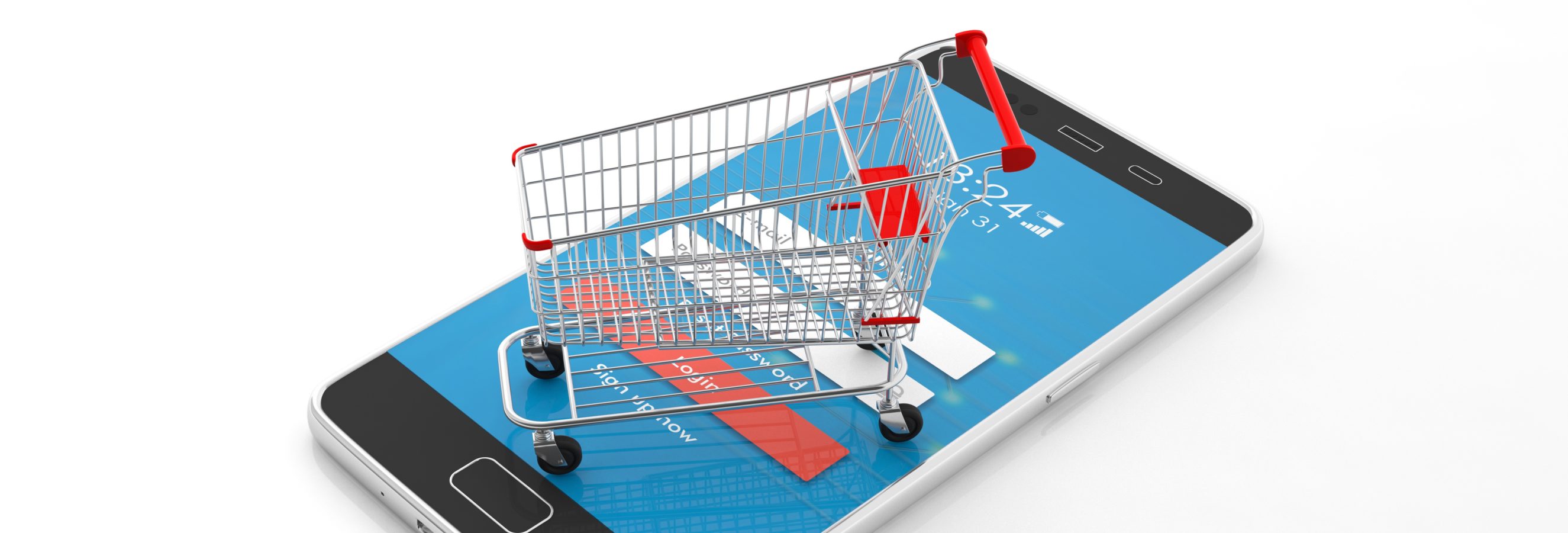As we make the shift to smaller and smaller devices from desktop to tablet to smartphone, mobile ecommerce is only going to grow and nowhere is there more opportunity for growth than online food and beverage. While products such as books and electronics sell quite well, CPG products such as groceries still only make up about 2% of all online sales. The main reason for this low level of adoption is perishables and delivery issues. Shoppers want to ensure their produce is fresh and they want it delivered when it suits them. Aside from these barriers, there is also another issue: the mobile shopping interface. Most retailers assume that groceries can be sold the same way on mobile as in store but if we take a closer look it’s clear the two need to be approached differently.
When shopping online we are in a hurry even more so than when we go to a store. Mobile ecommerce is not as simple as taking a picture of the pack and sticking it on a white background. Information must be communicated in an easy to read manner to promote engagement. The product image is king so retailers must find ways to create contrast and stopping power.
The lack of shelf context when shopping online which makes it difficult to communicate pack quantity. It’s easy to make a mistake and order an 8 pack when you wanted a 4 pack. The pack images look very similar and the eye tends to skip over the text description.
On a mobile device, the planogram is vertical instead of horizontal. This means that retailers have less time to capture shopper’s attention and it’s more difficult for shoppers to compare products. There is a limit to how far we will scroll. Typically, less than half of shoppers will scroll down more than 7 mobile screens before going on to do something else.
On mobile it’s very important to try and control the flow of information. Online shoppers naturally ignore information if it is presented to them in ways that require extra effort (ex. zig zag display). Displaying products in columns is generally better. If there is one constant to our online shopping behavior it’s where our eye focuses. Based on the number of columns products are displayed in, studies have shown the following:
- Products displayed in 1 column – eye goes to the product pack image instead of the text
- Products displayed in 2 columns – eye goes to the left column
- Products displayed in 3 columns – eye goes to the centre column
Knowing this, e-tailers can position best sellers strategically to drive sales. If products must be put in the right or left columns of a three-column layout, then these product images should create contrast to stand out.
Online retailers often like to provide a lot of text to explain a product. But studies have shown that the more text that is displayed, the more deselection happens. The online shopper is very impatient and if there is too much text they will get impatient and go somewhere else. There needs to be a balance.
Surprisingly, the competitive playing field has been leveled for smaller brands online. They can get as much exposure if not more than larger brands because of the deselection tools available with online shopping. Products can be sorted by price, best sellers and other ways. Large brands can’t “billboard” large sections of shelf space with their products as they can in store. This means that established brands must find other ways to get noticed.
Online, the social network has become more important than the brand. Due to loss aversion, the fear of losing is stronger than the possibility of winning. One negative comment can be more damaging than four positives. Negative comments have to be managed because the social network is so powerful.
Since the product image plays a larger role on mobile, the same pack image with different pack execution will encourage different behavior. For example, a soda can shown with a lemon beside it indicates that this beverage is appropriate for summer time consumption. Also, the right visuals can change the perception of the product. (since physical size is hard to determine, placing a glass beside the product pack shows relative size).
It’s clear that the small thumbnail approach to display products that Amazon adopted years ago is a challenge for consumer-packaged goods. System 1 thinking is much more prevalent when buying groceries and so different strategies are required. Mobile sales of CPG goods will continue to grow and e-tailers need to rethink their approach. Contact us if you would like to learn more about how to improve your mobile ecommerce packaging strategy.
Anne Stephenson
Chief Growth Officer, Explorer Research



